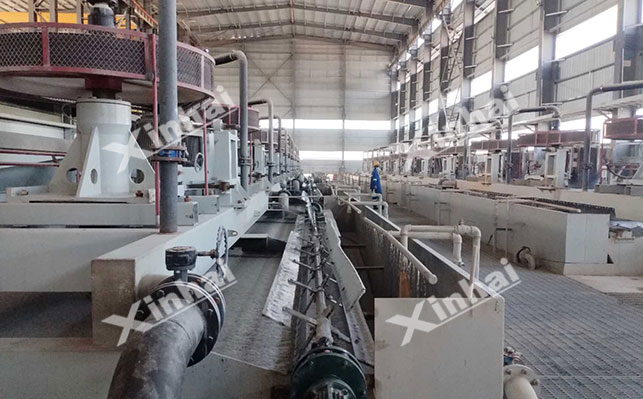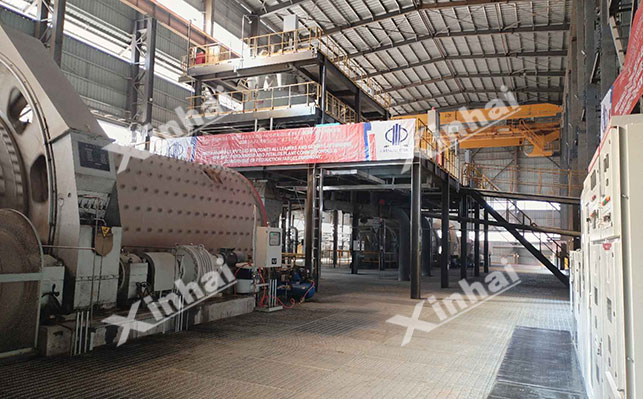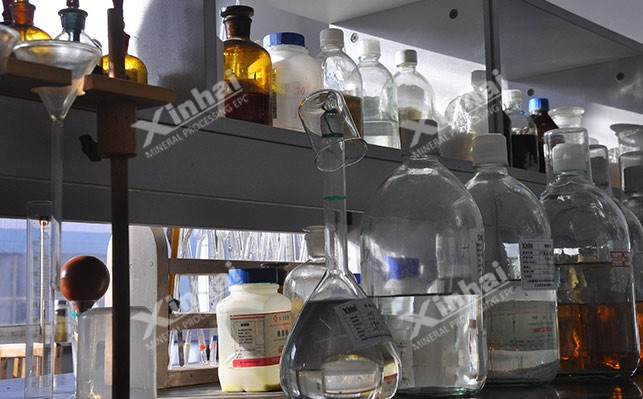
15311826613
Click to add WeChatLithium amblygonite is an important lithium-bearing mineral with a chemical composition containing phosphate, lithium, aluminum, and silicon. It has a relatively high lithium content and holds critical value in modern technology and energy sectors, particularly in lithium-ion battery manufacturing. With a Mohs hardness of 6-7, lithium amblygonite exhibits diverse crystal forms, often appearing as massive or granular structures. Its color ranges from light pink to deep red or brown. It is frequently associated with aluminum-bearing minerals such as apatite and diopside. Due to its properties, flotation is a commonly used and effective beneficiation method for lithium amblygonite. This article introduces the Lithium aluminum ore flotation method for Lithium Amblygonite, including its processes and reagents.
The flotation of lithium amblygonite is conducted under acidic conditions (pH 3-5) using fatty acids or phosphonic acid-based collectors, with fluorides as activators. The process involves fine grinding, separation from silicate minerals, and acid leaching to enhance recovery. The primary Flotation Method of Lithium Amblygonite includes the following approaches:

Direct flotation selectively floats lithium amblygonite from the ore. This method is effective for ores with high lithium amblygonite content and relatively simple gangue mineralogy. The ore is first ground to a fine size to achieve liberation. A collector is then added to selectively adsorb onto lithium amblygonite surfaces, rendering them hydrophobic while gangue minerals remain hydrophilic. Air bubbles are introduced, causing lithium amblygonite to attach and rise to the froth layer, which is then skimmed off as concentrate.
Reverse flotation removes gangue minerals while leaving lithium amblygonite in the slurry as concentrate. After grinding, regulators are added to modify slurry properties and mineral surface potentials. Collectors are then applied to float gangue minerals (e.g., silicates), while lithium amblygonite remains in the tank. This method is particularly useful for ores with easily floatable gangue, improving concentrate grade.
Combined flotation integrates direct and reverse flotation to enhance separation efficiency, especially for complex ores. By tailoring the process based on mineralogy, higher recovery rates and concentrate grades can be achieved. This approach is ideal when a single flotation method yields suboptimal results.
The Flotation Method of Lithium Amblygonite typically involves crushing, grinding, pre-flotation, flotation, cleaning, and tailings treatment. Acid leaching may supplement flotation to improve lithium recovery when separation from silicates (e.g., quartz, feldspar) is challenging.
Run-of-mine ore is first crushed using jaw and hammer crushers, then ground in a ball mill to achieve 60–80% passing 0.074 mm, ensuring liberation of lithium amblygonite from gangue.

The ground slurry is conditioned with collectors (e.g., xanthates) and frothers (e.g., pine oil) in a flotation cell. This step primes lithium amblygonite for separation by enhancing bubble attachment.
Key parameters (reagent dosage, bubble size, agitation) are optimized for direct or reverse flotation.
Direct flotation: Uses fatty acid collectors (e.g., oleate) in alkaline pulp to float lithium amblygonite.
Reverse flotation: Employs cationic collectors (e.g., amines) to remove silicates, with depressants (e.g., starch) suppressing lithium amblygonite.
The rougher concentrate undergoes screening, gravity separation, or magnetic separation to remove impurities and boost lithium grade.
Tailings may undergo leaching to recover residual lithium, followed by dewatering for disposal or reuse in construction materials.

Collectors: Xanthates and dithiophosphates chemically adsorb onto lithium amblygonite, promoting bubble attachment.
Frothers: Polyacrylamide stabilizes bubbles, ensuring efficient mineral transport.
Modifiers: Sodium carbonate (pH adjustment) and sodium silicate (dispersion) optimize flotation conditions.
In practice, the Flotation Method of Lithium Amblygonite requires tailored reagent schemes and process conditions, determined through bench-scale testing, to maximize recovery and concentrate quality.